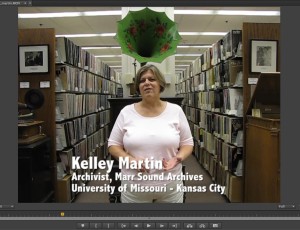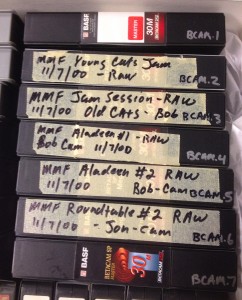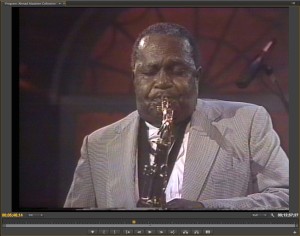
Why should you join The Association for Recorded Sound Collections? Subscribe to the ARSC recorded sound discussion list and get your questions answered or check out the ARSC YouTube page for more insights into the organization’s benefits.
While brushing up on editing skills and best practice for video preservation, I had the opportunity to complete a video project for The Association for Recorded Sound Collections (ARSC) in conjunction with their 2015 membership recruitment drive.
The videos, now on the ARSC Youtube page, feature ARSC members delivering personal testimonials, encouraging interested parties to join up with the organization. Being an ARSC member myself, I was able to utilize my connections to gain professional experience and enhance my resume.
Joining a professional organization, such as ARSC, can be critical for graduate students and professionals alike. Here is a glimpse into their mission:
The Association for Recorded Sound Collections, Inc. is a nonprofit organization dedicated to the preservation and study of sound recordings – in all genres of music and speech, in all formats, and from all periods.
Founded in 1966, ARSC is unique in bringing together private individuals and institutional professionals. Archivists, librarians, and curators representing many of the world’s leading audiovisual repositories participate in ARSC alongside collectors, dealers, researchers, historians, discographers, musicians, engineers, producers, reviewers, and broadcasters.
Supplementary education for audio-visual specialists and students is key to professional development as well as networking with individuals in one’s field of choice. For instance, The Association of Moving Image Archivists (AMIA) may be a good fit for film and video specialists whereas The Society of American Archivists (SAA) would benefit archivists of all kinds.
ARSC, however, is geared toward audiophiles, record collectors, and individuals who work with audio materials. ARSC members receive the ARSC Journal and Newsletter, discounted registration fees for the annual conference, as well as access to past conference recordings via the homepage.Topics from the 2014 conference ranged from southern folk music, to new open source preservation tools, to metadata, metadata, metadata.
Here’s a pitch from LaBudde Special Collections’ Metadata Librarian and Chair of the ARSC Membership Recruitment Task Force, Sandy Rodriguez:





